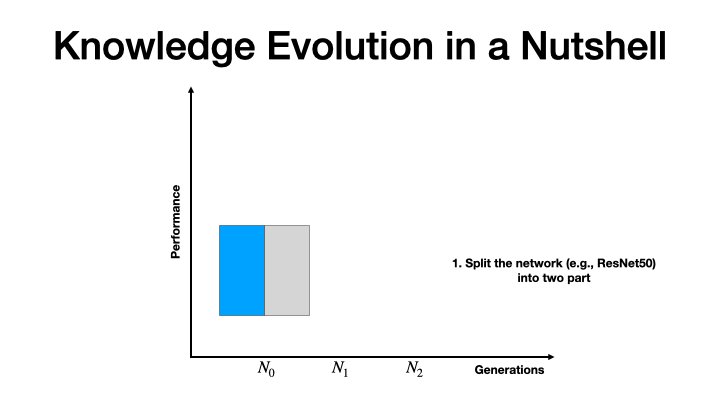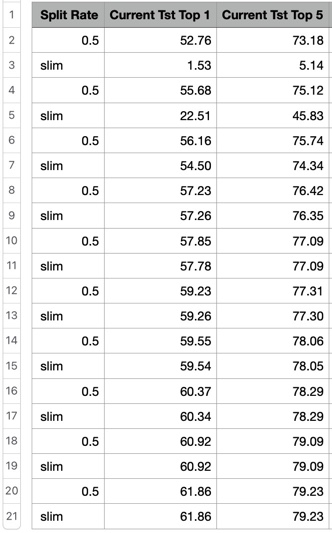The official PyTorch implementation of Knowledge Evolution in Neural Networks -- CVPR 2021 Oral.
We subclass neural layers and define the mask inside the subclass. When creating a new network, we simply use our SplitConv and SplitLinear instead of the standard nn.Conv2d and nn.Linear.
- To extract a slim model, I create a dummy slim network with
slim_factor=split_rate(such as), then I callutils.nets_utils.extract_slim(such as) to copy the fit-hypothesis weights, from the dense network, into the slim network.
- Python 3+ [Tested on 3.7]
- PyTorch 1.X [Tested on torch 1.6.0 and torchvision 0.6.0]
First update constants.py with your dataset dir and checkpoints dir
To train a model python train_KE_cls.py
The default hyperparameters are already hard coded in the python script. However these hyperparameters can be overridden by providing at least one parameter when running the script (e.g., python train_KE_cls.py --name exp_name)
The Flower102Pytorch loader (data>flower.py) works directly with this Flower102 dataset. This is the original flower102, but with an extra list directory that contains csv files for trn, val and tst splits. Feel free to download the flower dataset from oxford website, just update data>flower.py accordingly.
The following table shows knowledge evolution in both the dense (even rows) and slim (odd rows) using Flower102 on ResNet18. As the number of generation increases, both the dense and slim networks' performance increases.
- Document the important flags
- Add TL;DR
I want to give credit to Vivek Ramanujan and Mitchell Wortsman's repos. My implementation uses a lot of utils and functions from their code
- It would be great if someone re-implement this in Tensorflow. Let me know and I will add a link to your Tensorflow implementation here
- Pull requests to support more architectures (e.g., WideResNet, MobileNet, etc) are welcomed.
- I accept coding-tips to improve the code quality.
- To the contribution list, I will add the names/links of those who contribute to this repository.
- This repository delivers a knowledge evolution implementation in a minimal form. Accordingly, I disabled CS_KD baseline because it requires a specific sampling implementation.
- This implementation looks complex because it supports concatenation layers in DenseNet and GoogLeNet. For those interested in ResNets only, please use algorithm #1 presented in the paper.
- This repository is a "clean" version of my original implementation. This repos focuses on the core idea and omits any research exploration snippets. If a function is missing, please let me know.
- 1.0.0
- First code commit on 10 Dec 2020
- Submit/Test Split_googlenet code commit on 19 Dec 2020
- Submit/Test Split_densenet code commit on 20 Dec 2020
- Repository made public on 1 Mar 2021
- Add Aircarfts100 dataset loader 31 Jul 2021 -- the lists dir is available here
@inproceedings{taha2021knowledge,
title={Knowledge Evolution in Neural Networks},
author={Taha, Ahmed and Shrivastava, Abhinav and Davis, Larry},
booktitle={Proceedings of the IEEE/CVF Conference on Computer Vision and Pattern Recognition (CVPR)},
year={2021}
}

